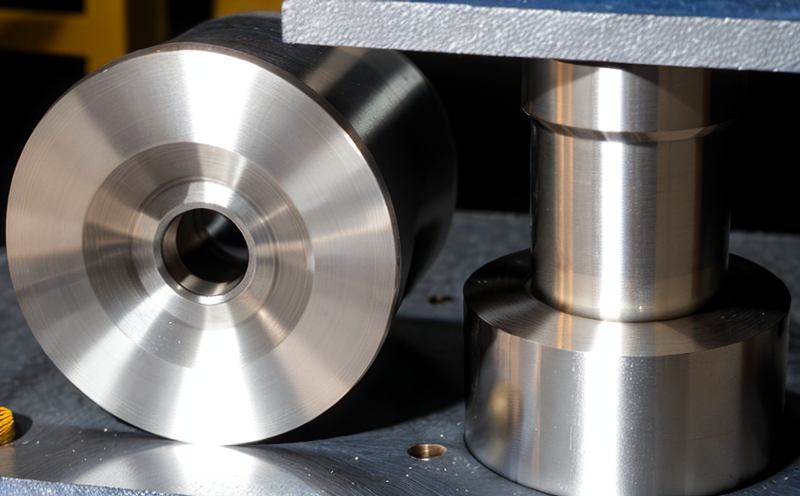ASTM E112 Grain Size Analysis of Nanostructured Metallic Microstructures
The ASTM E112 standard specifies the procedures for measuring and reporting the grain size in metallic materials, including nanostructured metals and alloys. This service is essential for quality managers, compliance officers, R&D engineers, and procurement specialists involved with nanomaterials testing. The process is critical in ensuring that manufactured products meet international standards and are reliable.
The ASTM E112 procedure involves the use of optical microscopy to measure grain size based on the intercept method. This method requires careful preparation of specimens, which include polishing and etching techniques tailored for nanoscale structures. The challenge lies in achieving consistent and repeatable results given the small dimensions involved.
The testing process begins with the selection of an appropriate specimen that represents the microstructure of interest. Specimen preparation is crucial; it involves mechanical grinding, followed by polishing to a specific finish. Etching agents are then used to reveal grain boundaries for accurate measurement under optical microscopy. The key challenge here is ensuring that etching does not alter the grain structure.
Once prepared, the specimens are observed using an optical microscope equipped with appropriate objectives and illumination settings. The intercept method involves counting the number of intersections made by a series of lines drawn across the field of view with grains or their boundaries. This data is then used to calculate the equivalent spherical diameter (ESD) which represents the grain size.
The ASTM E112 standard provides detailed guidelines on specimen preparation, microscopy techniques, and statistical treatment of the data obtained from multiple observations. Compliance with these standards ensures that results are reliable and comparable across different laboratories. Reporting involves documenting all steps taken during sample preparation and analysis along with final grain size measurements.
The accuracy and precision of ASTM E112 grain size analysis are paramount in nanotechnology applications where even minor variations can lead to significant performance differences. This service ensures that manufacturers adhere to strict quality control measures, thereby enhancing product reliability and consistency.
Scope and Methodology
The scope of ASTM E112 grain size analysis encompasses the measurement and reporting of grain sizes in metallic materials. This includes both conventional and nanostructured metals and alloys. The methodology involves several key steps:
- Selecting an appropriate specimen that accurately represents the microstructure being analyzed.
- Preparing specimens through mechanical grinding, polishing, and etching to reveal grain boundaries.
- Observing prepared specimens under an optical microscope using specific objectives and illumination settings.
- Drawing lines across the field of view to intersect with grains or their boundaries.
- Counting the number of intersections made by these lines and calculating equivalent spherical diameters (ESD).
This systematic approach ensures that grain sizes are accurately measured, providing reliable data for quality control and research purposes. Compliance with ASTM E112 guarantees consistency in results across different laboratories.
Industry Applications
| Industry Sector | Application |
|---|---|
| Aerospace | Evaluating the integrity of nanostructured metallic components for improved performance and durability. |
| Bioengineering | Assessing compatibility between nanomaterials and biological systems to enhance medical device efficacy. |
| Automotive | Ensuring that nanostructured metals used in automotive parts meet strict safety standards. |
| Electronics | Improving the conductivity and heat dissipation properties of electronic components by optimizing grain size. |
The ASTM E112 grain size analysis is particularly valuable in these industries due to its ability to provide precise measurements essential for maintaining high quality standards. By adhering to this standard, manufacturers can ensure that their products meet stringent regulatory requirements and perform optimally under various conditions.
Environmental and Sustainability Contributions
- Promoting resource efficiency by optimizing the use of raw materials in manufacturing processes.
- Enhancing product durability, which reduces waste generation over time.
- Facilitating recycling efforts through accurate assessment of material composition and integrity.
- Supporting sustainable development goals by ensuring that products are designed with minimal environmental impact from the outset.
The ASTM E112 grain size analysis contributes significantly to these sustainability goals. By providing precise measurements, it enables manufacturers to optimize their processes and materials, leading to reduced waste and enhanced resource efficiency. Additionally, accurate assessment of material integrity supports recycling initiatives while promoting overall sustainability practices.





